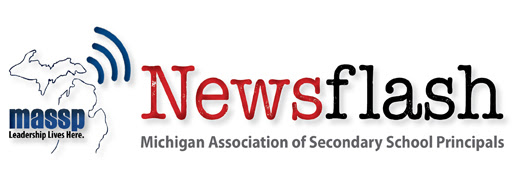Senate resolution would send ESSA rules back to ED for revisions
Senator Lamar Alexander (R-TN), Chairman of the Senate Health, Education, Labor and Pensions Committee, introduced a joint resolution on Tuesday that would rescind the Obama administration's accountability and state plan rules. Alexander explained the purpose of the resolution in a statement:
Here is the problem with this rule that was put out by the U.S. Department of Education: the rule specifically does things or requires states to do things that Congress said in our law fixing No Child Left Behind that the Department can't do. In other words, the Department's regulation specifically violates the law.
The House has already voted in favor of repeal. If the Senate resolution passes and becomes law, the Department of Education (ED) will have to modify its ESSA rules before reissuing them.
A review of the ESSA regulations is now underway at ED pursuant to an administration order calling on agencies to review recently issued rules. Secretary of Education Betsy DeVos has promised a less prescriptive consolidated state plan template by mid-March, and has encouraged states to continue following the April and September filing deadlines. So regardless of any future regulatory changes, it appears the overall implementation of ESSA will likely continue on the current timeline.
Trump budget priorities will hurt education
To better understand President Donald Trump's spending plan for fiscal year 2018, it helps to recall a few important budget terms. The federal budget can be summed up this way: about two-thirds of spending is on mandatory programs, such as Social Security and Medicare. The other third is called discretionary spending. For mandatory programs, Congress sets the eligibility terms and benefits, and the spending remains automatic until Congress changes the terms again. Spending on mandatory programs is projected to grow much faster than the economy over the coming decade and beyond. In contrast, discretionary spending is set by Congress each year through the appropriations process in which Congress determines the funding level for each program. Discretionary spending is comprised of defense and non-defense programs. Most education spending falls under the latter. Non-defense discretionary spending is declining as a share of the economy and is headed for the lowest level in more than 50 years.
Trump's 2018 general spending outline, released by the White House on Monday, will only accelerate the nation's disinvestment in non-defense programs like education. Trump intends to boost spending for defense by $54 billion and offset the increase by cutting a similar amount of funding for non-defense programs. According to members of Congress that sit on the appropriations committees, Trump would reduce spending by at least 12% on health, education, and labor programs from the 2017 level, which Congress has yet to finalize but which is expected to be less than 2016 funding amounts. The trend is clearly downward. The cuts could be even greater depending on the size of increases in other areas, such as border control and veterans programs.
More details of the president's budget outline will be released in mid-March, with a complete budget expected later in the spring. The March details will only include targets for discretionary spending programs.
NEA criticizes withdrawal of protections for transgender students
On February 22, ED and the Department of Justice sent a joint Dear Colleague letter to education stakeholders withdrawing the departments' May 13, 2016, Title IX guidance on the obligation of schools to protect the civil rights of transgender students. NEA President Lily Eskelsen García strongly criticized the Trump administration's decision, noting that "every student matters, and every student has the right to feel safe, welcomed, and valued in our public schools." Eskelsen García urged states, districts, and schools to continue adopting protections for transgender students.
According to a report by The New York Times, Secretary of Education Betsy DeVos initially opposed withdrawing the guidance but went along after Attorney General Jeff Sessions successfully appealed to President Trump. Sessions has a long history of opposing progress in civil rights.
In an additional step to protect transgender students, NEA yesterday joined allies in filing a friend of the court brief in the Supreme Court aimed at protecting the civil rights of transgender students.
DeVos signals support for magnet schools
Addressing participants at the Magnet Schools of America's 2017 National Policy Training Conference, Secretary of Education Betsy DeVos applauded the role of magnet schools in expanding and improving options for parents and students, combating segregation, and improving the lives of urban students. She also criticized "those who claim to be champions of education, but...really only support their respective 'sectors'." Such thinking she maintained is "unnecessary and unproductive in our common goal to serve all students." DeVos has historically championed the private sector in education through support for vouchers and for-profit charters.
Magnet schools are created by, and are accountable to, public school districts. Often distinguished by their thematically-focused curricula and instructional approaches, they enrolled 2,554,828 students in 3,254 schools in the latest school year reported, 2013-2014. Unlike magnet schools, charter schools increase already high levels of segregation in public schools, frequently do not hold open school board meetings or respond to open records requests, and close within five years of opening at a rate of 20%. Charter schools enrolled 2,519,065 students in 6,465 schools in the 2013-2014 school year. The federal government in recent years has dramatically upped funding for charter expansion through the Charter Schools Program, now spending over three times as much money on it as it does on the Magnet Schools Assistance Program.
NCLB's flaws provide lessons for ESSA
As states consider how much to reduce the role of high-stakes testing in their accountability systems using new discretion provided by ESSA, they would do well to keep in mind the relative benefits and costs of high-stakes testing under NLCB. According to a recent paper by Professor Helen Ladd at Duke University's Sanford School of Public Policy, NCLB's accountability system had little positive effect on student test scores while creating serious problems in schools. Reviewing NAEP reading and math scores from 1990 to 2015, Ladd's paper, No Child Left Behind: A Deeply Flawed Federal Policy, concludes:
Although both 4th- and 8th-grade math test scores rose in the post-NCLB period (until 2015), for the most part they simply continued the upward trend that had begun in the 1990s. Moreover, reading scores declined in the first few years of the post-NCLB period. Thus, these trends provide little or no support for the hypothesis that NCLB raised test scores.
Commenting on research by others showing possible limited test score improvements for some subgroups in some grades and subjects, Ladd notes that any positive effects "were far from sufficient to move the needle much on test score gaps. Such gaps in NAEP scores remained high in 2015."
Ladd acknowledges the importance of subgroup attention in NCLB, but details several key flaws in the statute: its narrow focus on tests which "narrowed the curriculum by shifting instruction time toward tested subjects and away from others"; its unrealistic expectations which would have led to most schools being labeled failures were it not for the 2011 waiver program; its negative effect on teaching morale; and the "significant pressure on individual schools to raise student achievement without providing the support needed to assure that all students had an opportunity to learn to the higher standards."
Take Action
Tell Congress to invest in children, especially those in need, by providing increased support for under-resourced public schools across the nation.
|








































No comments:
Post a Comment
Note: Only a member of this blog may post a comment.